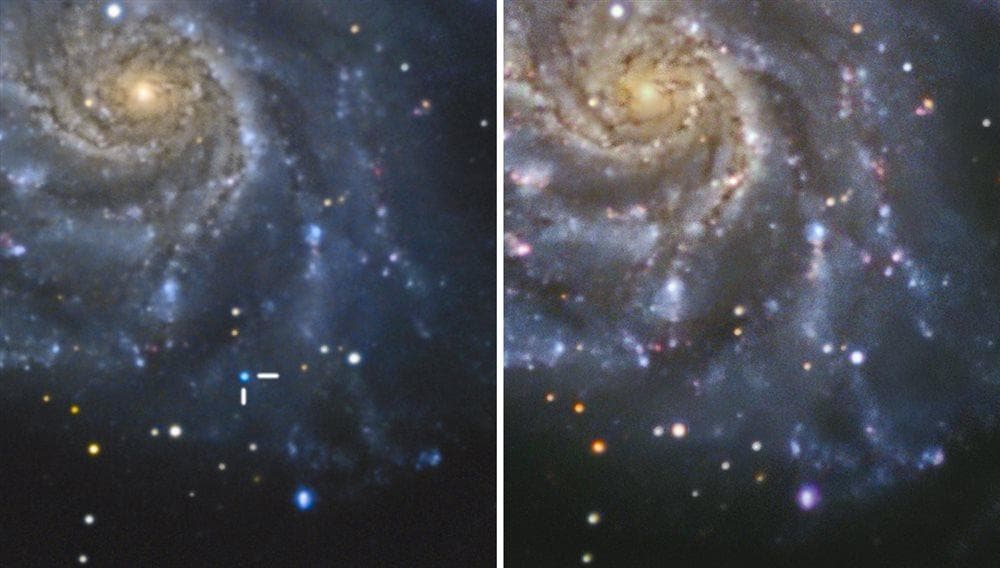
with David Fuller

Are Type 1a supernovas picky eaters?
Last year's supernova in M101 - the closest one to us in decades - was an astronomy event that sent science-minded hearts racing. A Type 1a supernova occurs when a white dwarf star gains stellar mass via accreting mass from another object, and exceeding 1.38 solar masses, at which point runaway fusion occurs and the star explodes. With new instrumentation available to see this kind of stellar explosion occur, scientists are getting closer to understanding what forces cause these massive releases of energy occur:
"Soderberg and her colleagues examined SN 2011fe with a suite of instruments in wavelengths ranging from X-rays to radio. They saw no sign of stellar material recently devoured by the white dwarf. Instead, the explosion occurred in a remarkably clean environment.
"This white dwarf was a tidy eater," said Laura Chomiuk of the CfA, lead author of one of the two papers.
Additional studies using NASA's Swift satellite, which examined a large number of more distant Type Ia supernovae, appear to rule out giant stars as companions for the white-dwarf progenitors. Those results were described in a NASA press release.
Taken together, these studies suggest that Type Ia supernovae likely originate from a more exotic scenario, possibly the explosive merger of two white dwarfs."
Now there is another supernova relatively nearby - sn2012aw - and certainly there is hope it is a Type 1a as well, offering another chance at data collection. Although supernova explosions occur throughout the universe on a somewhat regular basis, they are more rare within our galactic neighborhood, given the billions of galaxies out there.
I did my best to point the way to the last one - sn2011fe - in M101. If this one in M95 in Leo - sn2012aw - proves to be bright enough (Type 1a or not) I'll do my best to guide your way to it too. Here's hoping for a nice bright flash of light in Leo this spring.
